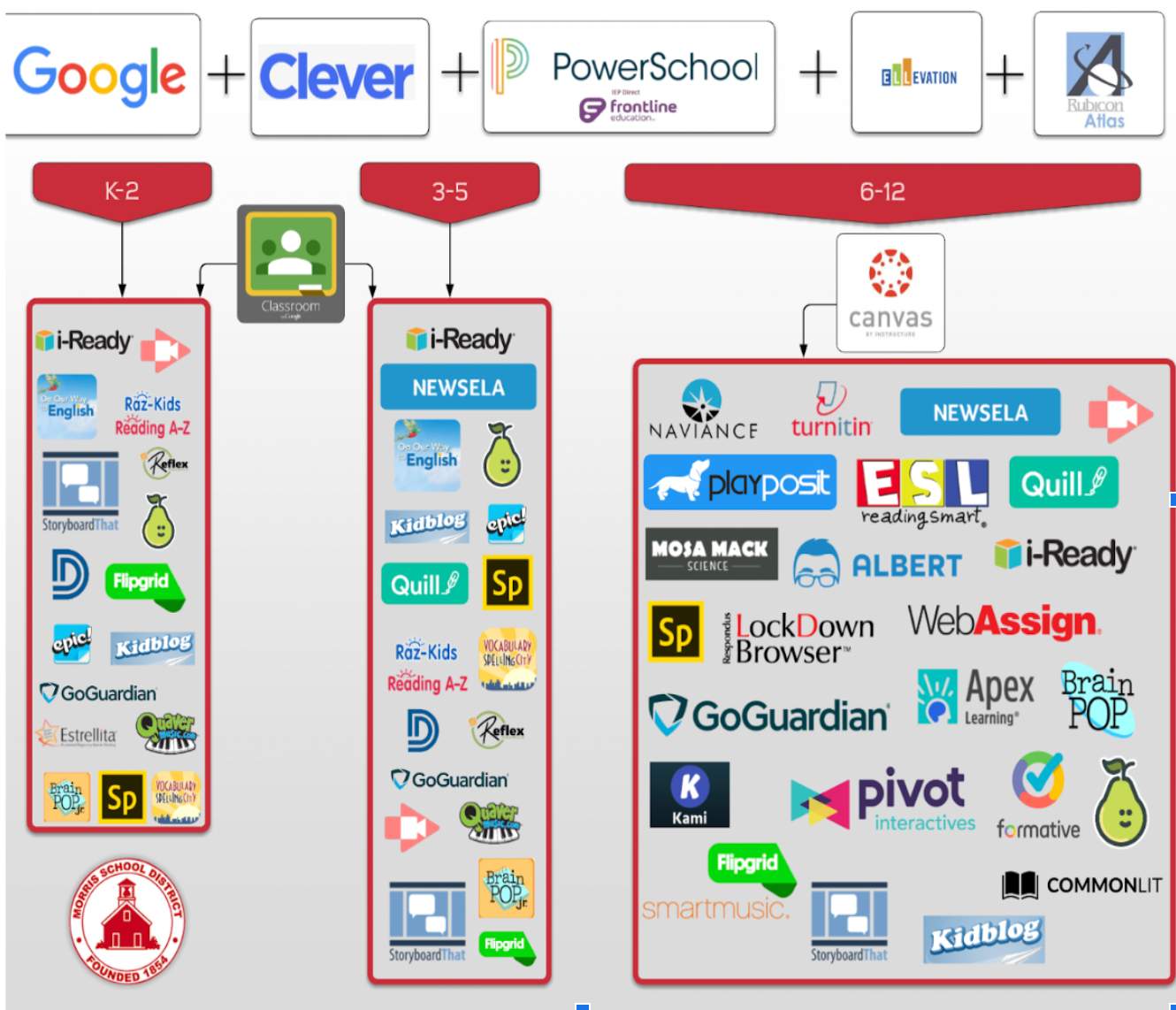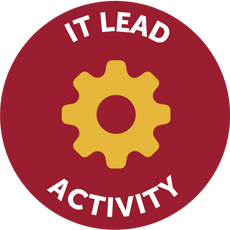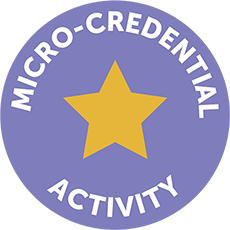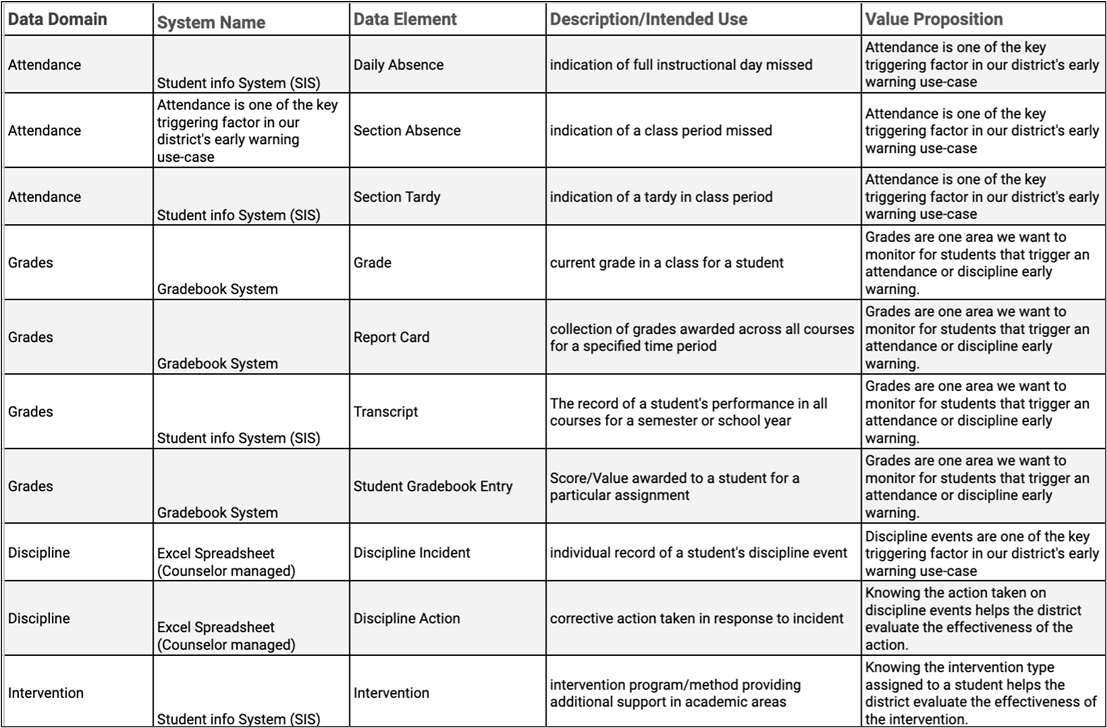Use Case Data Catalogue Template
Overview
This activity will guide you through the process of documenting the data elements your district needs to implement your use case. You will document this information in the template titled “Use Case Data Catalogue Template” in your resource folder. This catalog will expand to include more elements and definitions as the project moves forward. In the future, your data stewards will be able to use this catalog as a guide for locating the systems and sources that will provide these elements. Do you have a list or chart of all your district platforms? Below is an example of the many places data can live in a school district.


Note:
This activity requires the participation of your district’s IT Lead.
Part One: Identifying Use Case Data Domains
The scope of education data is large and its organization is complex. Data domains categorize bodies of data that are commonly leveraged in school districts. To begin, identify the data domains that your use case will address. Consider additional domains that may not be already represented but apply to your use case.
| Accountability | Assessment | Bell schedule | Budget |
| Calendar | Course | Credentials | Discipline |
| Education Organizations | Grades | Interventions | Parent |
| Program | Staff | Student | Community |
Part Two: Identifying Use Case Data System
Next, identify all the known data systems that hold data you need to achieve your use case. Using the Use Case Catalog Template list the name of each system, the system type, and the data elements it includes. See the example below.
| System Name | System Type | Data Elements Included |
|---|---|---|
| Example: SchoolTools | Student Information System | Student demographics Student enrollment Parent contact information |
| Assessment Plus | Formative and Summative Assessment | Student demographics Student achievement Interventions |
| Assessment |
Part Three: Make Connections
Now add the list of data domains identified in Part One of the activity to the first column of the template. Then, add the list of systems identified in Part Two of the activity to the top row of the template. Finally, identify which data source(s) could populate data for each domain.
| Data Systems (from part two of the activity) | ||||||
| Assessment Plus | SchoolTools | |||||
| Domains (from part one of the activity) | ||||||
| Assessment | test scores | |||||
| Student | demographics | |||||
| Student | ||||||
IGNITE Questions
Where is there alignment between your district’s use case domains and technology systems? Where are there gaps?
What steps does your district need to take to ensure that data are accessible for all use case domains?

Part Four: Putting Together a Data Catalog

Now, assemble your district’s Data Catalog. This template is divided into five columns:
- The first column in the template is for the data domains that your district identified in Part One of the activity.
- In the second column, list the systems related to each data domain that store use case data, which your district identified in Part One of the activity as well. Documenting this will go a long way toward streamlining the data sharing and procurement for your team.
- In the third column, your district should narrow your focus within each domain to the specific data elements identified in Part One of the activity. These data elements don’t need to be from a specific data model or exact field names in existing data outputs, but they can be if you know them. The intent is to provide a target data element for your use case.
- In the fourth column, provide additional detail on the data element your district needs and/or its intended use, if not readily apparent.
- The fifth column is meant for a brief description of the value proposition this element brings to your district’s use case. It’s important to trace work back to your use case to avoid misplaced effort or confusion.
Refer to the sample data catalog provided below to aid in understanding what your data catalog may look like.
